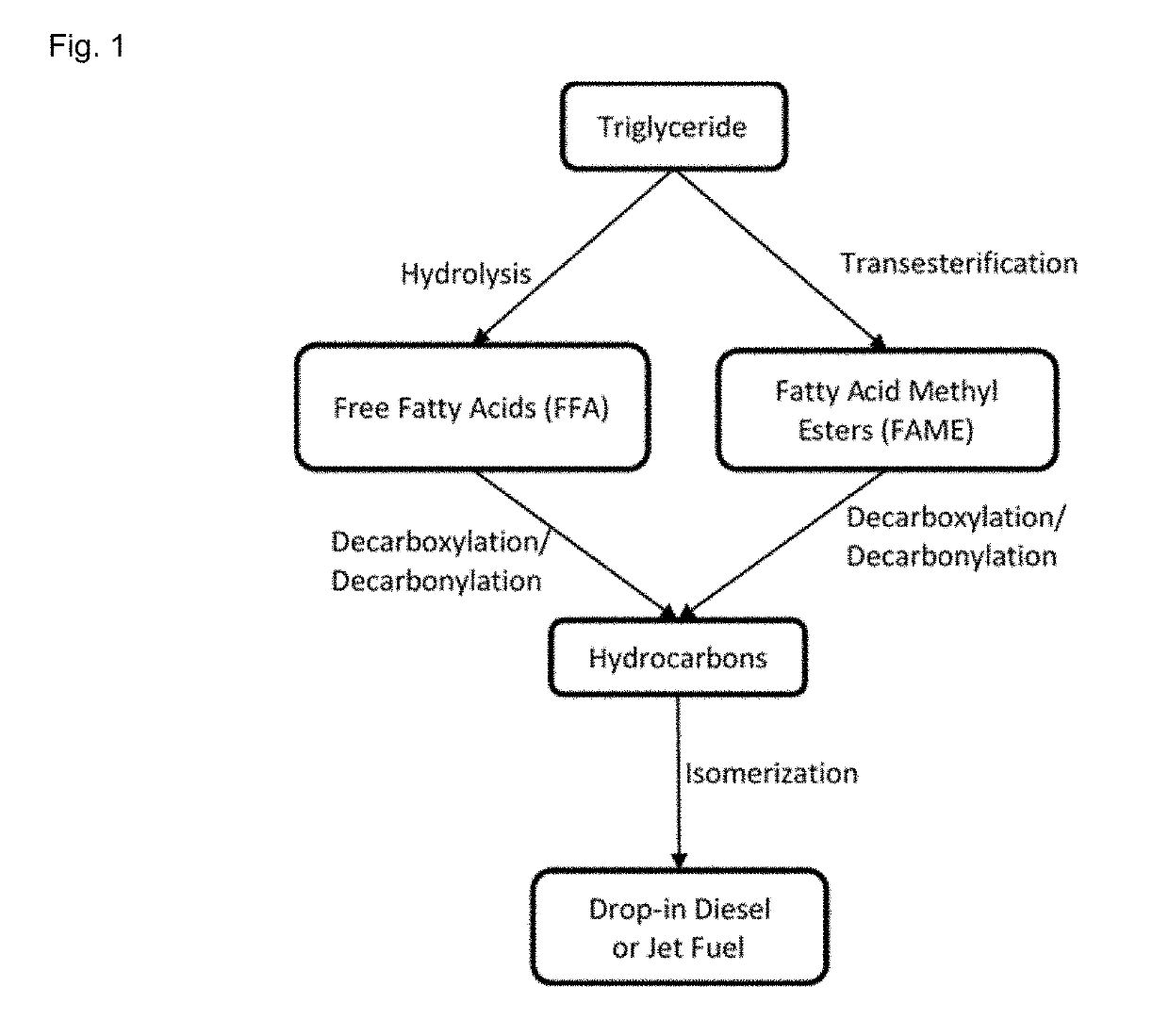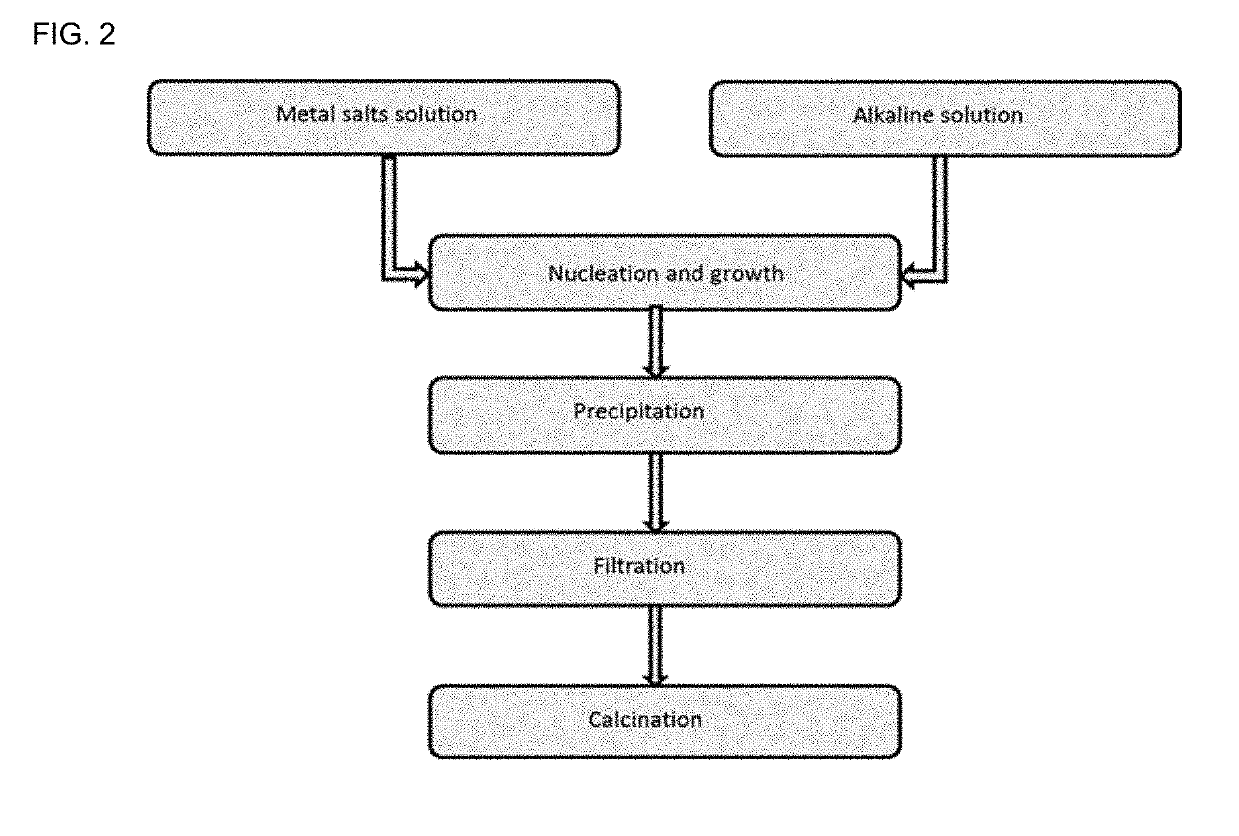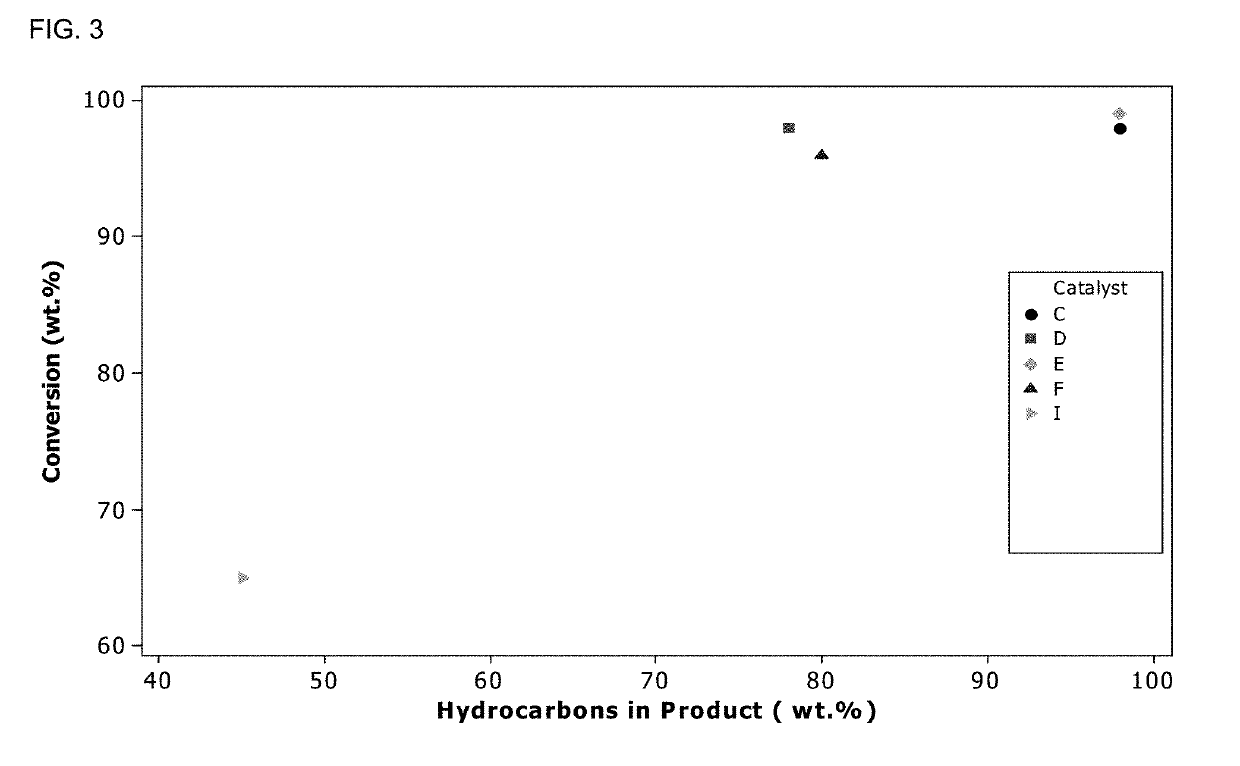Process for the production of hydrocarbon biofuels
- Summary
- Abstract
- Description
- Claims
- Application Information
AI Technical Summary
Benefits of technology
Problems solved by technology
Method used
Image
Examples
Embodiment Construction
[0030]In one aspect, the present invention provides a method of deoxygenating a feedstock, comprising at least one oxygenated organic compound, to form a hydrocarbon product, comprising the steps of contacting the feedstock with a catalyst under conditions to promote deoxygenation of the at least one oxygenated compound.
[0031]In one aspect, the catalyst comprises a mixed metal oxide of the empirical formula:
(M2)y(M1)O—ZnO—(Al2O3)x
wherein M1 is a metal selected from the group consisting of Ag, Au, Co, Cr, Cu, Fe, Ir, Mo, Ni, Os, Pd, Pt, Rh, Ru, and W; M2 is a metal selected from the group consisting of Ag, Au, Co, Cr, Cu, Fe, Ir, Mo, Ni, Os, Pd, Pt, Rh, Ru, and W, but is not the same as M1; x is 0 or 1; and y is 0 or 1.
[0032]In one aspect, M1 is selected from the group consisting of Co and Ni. In one aspect, M2 is selected from the group consisting of Ag, Au, Co, Ir, Ni, Os, Pd, Pt, Rh, and Ru.
[0033]In one aspect, the catalyst comprises a mixed metal oxide of the formula MO—ZnO—(Al2...
PUM
| Property | Measurement | Unit |
|---|---|---|
| Volume | aaaaa | aaaaa |
| Volume | aaaaa | aaaaa |
| Volume | aaaaa | aaaaa |
Abstract
Description
Claims
Application Information
 Login to View More
Login to View More - R&D
- Intellectual Property
- Life Sciences
- Materials
- Tech Scout
- Unparalleled Data Quality
- Higher Quality Content
- 60% Fewer Hallucinations
Browse by: Latest US Patents, China's latest patents, Technical Efficacy Thesaurus, Application Domain, Technology Topic, Popular Technical Reports.
© 2025 PatSnap. All rights reserved.Legal|Privacy policy|Modern Slavery Act Transparency Statement|Sitemap|About US| Contact US: help@patsnap.com



